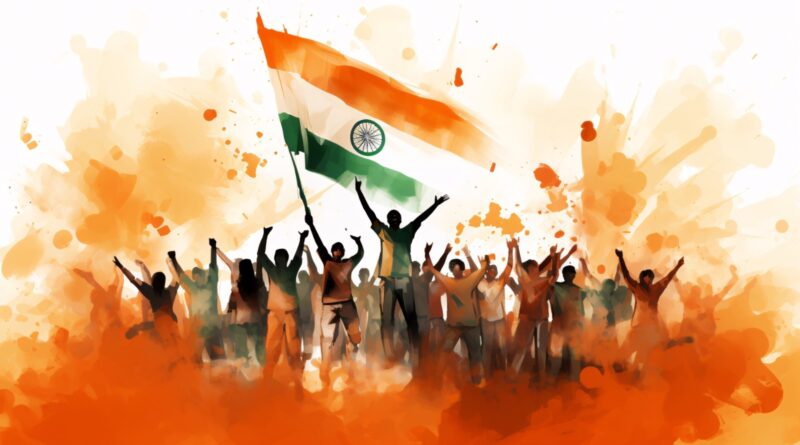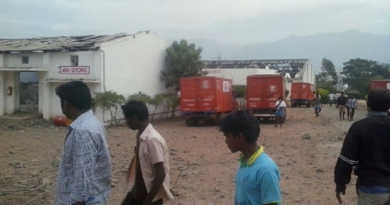The Battle Begins: Lok Sabha Elections Set to Electrify 102 Constituencies Across India on April 19th.
With Lok Sabha elections 2024 looming large over the Indian political landscape, the stage is set for a momentous electoral battle as 102 constituencies gear up for polling on April 19th. From the verdant valleys of Arunachal Pradesh to the bustling metropolises of Maharashtra, voters across the nation are poised to cast their ballots and shape the course of India’s democratic destiny.
The electoral battleground spans a diverse array of states and regions, each with its own unique socio-political dynamics and electoral nuances. From the pristine beauty of the Andaman and Nicobar Islands to the rugged terrain of Uttarakhand, candidates and political parties are leaving no stone unturned in their quest for victory.
Let’s take a closer look at some of the key battlegrounds and the stakes involved:
- Tamil Nadu (39 Constituencies):
Tamil Nadu, often referred to as the political powerhouse of South India, is gearing up for a high-stakes electoral showdown across its 39 constituencies. The state, known for its Dravidian politics and vocal electorate, is witnessing a fiercely contested battle between the ruling party and the main opposition. With regional parties and smaller outfits also vying for a share of the electoral pie, the outcome in Tamil Nadu is likely to shape the contours of national politics in the days to come. - Rajasthan (12 Constituencies):
Known for its vibrant culture and rich heritage, Rajasthan is set to witness a keenly contested electoral battle across its 12 constituencies. The state, which has traditionally been a stronghold of the ruling party, is witnessing a spirited challenge from the opposition, buoyed by anti-incumbency sentiments and strategic alliances. With issues such as agrarian distress and unemployment dominating the discourse, voters in Rajasthan are expected to deliver a verdict that could have far-reaching implications for the political landscape of the state. - Uttar Pradesh (8 Constituencies):
Uttar Pradesh, the most populous state in India, is once again at the center of political attention as voters prepare to cast their ballots across 8 constituencies. With its vast hinterlands and complex caste equations, Uttar Pradesh is a bellwether state whose electoral verdict often sets the tone for national politics. The ruling party, as well as the opposition, are pulling out all the stops in their bid to sway voters, with issues such as law and order, development, and social welfare dominating the electoral discourse. - Maharashtra (5 Constituencies):
Maharashtra, the economic powerhouse of India, is set to witness a closely contested battle across its 5 constituencies. With its bustling metropolises and sprawling rural hinterlands, the state presents a microcosm of India’s diverse socio-economic fabric. The ruling party, as well as its allies, are hoping to capitalize on their track record of governance and development, while the opposition is seeking to leverage issues such as agrarian distress and unemployment to their advantage. - Arunachal Pradesh (2 Constituencies): Arunachal Pradesh’s elections often revolve around issues of infrastructure development, border security, and preservation of tribal rights. The state’s political landscape is influenced by a mix of local tribal identities and national party dynamics.
- Assam (5 Constituencies): Assam’s elections are characterized by the state’s diverse demographics, including various ethnic and linguistic communities. Issues such as immigration, development, and identity politics often dominate the electoral discourse.
- Bihar (4 Constituencies): Bihar’s elections are significant due to its large population and complex caste-based politics. The state often witnesses intense political competition, with parties vying for the support of various caste groups and regions.
- Chhattisgarh (1 Constituency): Chhattisgarh’s elections are crucial as the state grapples with issues of development, Naxal insurgency, and tribal rights. The state’s political landscape is shaped by these factors along with the influence of national parties.
- Madhya Pradesh (6 Constituencies): Madhya Pradesh plays a pivotal role in national politics, with its six constituencies contributing significantly to the Lok Sabha. The state often reflects broader national political trends and is known for its BJP stronghold.
- Manipur (2 Constituencies): Manipur’s elections are marked by the state’s unique cultural diversity and security concerns. Issues such as insurgency, economic development, and ethnic tensions often shape the electoral narrative.
- Meghalaya (2 Constituencies): Meghalaya’s elections revolve around issues of tribal rights, environmental conservation, and economic development. The state’s political landscape is influenced by local tribal identities and the presence of regional parties.
- Mizoram (1 Constituency): Mizoram’s elections are significant as the state focuses on issues such as development, peace, and preservation of indigenous culture. The political landscape is characterized by the dominance of regional parties and concerns about autonomy.
- Nagaland (1 Constituency): Nagaland’s elections are influenced by issues of insurgency, development, and preservation of tribal culture. The state’s political dynamics often revolve around the demand for greater autonomy and peace talks with militant groups.
- Sikkim (1 Constituency): Sikkim’s elections are unique due to its status as India’s only organic state and its focus on sustainable development. The state’s political landscape is shaped by issues such as tourism, environmental conservation, and preservation of Sikkimese culture.
- Tripura (1 Constituency): Tripura’s elections are marked by the state’s transition from Left Front dominance to BJP rule. The state’s political landscape is influenced by issues of development, identity politics, and ethnic tensions.
- Uttarakhand (5 Constituencies): Uttarakhand’s elections are significant due to the state’s religious and environmental importance. The political discourse often revolves around issues such as tourism, development, and preservation of the Himalayan ecosystem.
- West Bengal (3 Constituencies): West Bengal’s elections are characterized by intense political competition between the ruling Trinamool Congress and the BJP. The state’s political landscape is influenced by issues such as identity politics, development, and communal tensions.
- Andaman and Nicobar Islands (1 Constituency): The elections in Andaman and Nicobar Islands are crucial for the region’s development and environmental conservation. The political discourse often focuses on issues such as tourism, infrastructure, and preservation of marine biodiversity.
- Jammu and Kashmir (1 Constituency): Jammu and Kashmir’s elections are closely watched due to its special status and complex socio-political dynamics. The region’s transition to a Union Territory has brought significant changes in its political landscape.
- Lakshadweep (1 Constituency): Lakshadweep’s elections are significant due to its unique geography and cultural diversity. The political discourse often revolves around issues of development, environmental conservation, and preservation of local traditions.
- Puducherry (1 Constituency): Puducherry’s elections are marked by its unique status as a Union Territory with its own Legislative Assembly. The political landscape is shaped by issues such as governance, development, and preservation of the region’s cultural heritage.
The war of words, promises, and pledges has reached a fever pitch as candidates crisscross the length and breadth of the country, seeking to win over the hearts and minds of voters. From massive rallies to door-to-door canvassing, every conceivable tactic is being employed in the quest for electoral victory. However, amidst the cacophony of electoral politics, it is ultimately the discerning voter who holds the power to shape the destiny of the nation.
As the clock ticks down to polling day on April 19th, all eyes are on the 102 constituencies across India as voters prepare to exercise their democratic right and make their voices heard. In the coming days, as ballots are cast and the results are tabulated, the nation will witness the culmination of a democratic spectacle that reaffirms the enduring spirit of Indian democracy.




